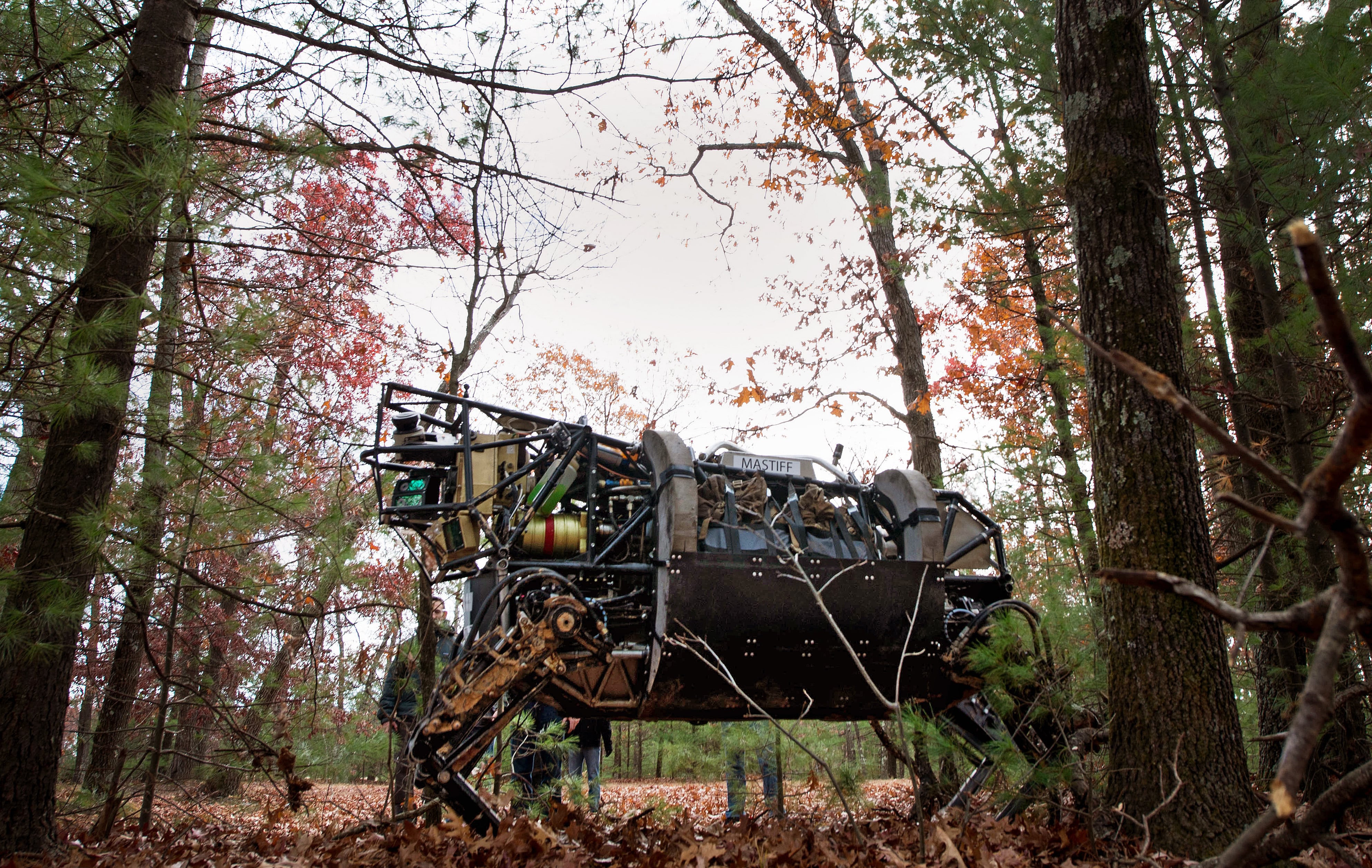The Army’s Combat Capabilities Development Command and its subordinate organizations, such as the Army Research Laboratory, work the science and technology behind everything that makes a modern force.
The command leads centers that focus on everything from chemical and biological threats, data and analysis, ground vehicle systems, aviation and armaments.
CCDC provided updates to a sample of programs and projects to Army Times before the Association of the U.S. Army’s annual conference.
War-fighter machine interface backpack controller for Project Origin vehicle
Project Origin is a testing and demonstration platform for emerging technologies, the data from which helps Army Combat Capabilities Development Command and cross-functional team partners inform the Robotic Combat Vehicle campaign of learning. As part of the Army modernization enterprise led by 31+4 signature modernization efforts, the technologies that Project Origin helps develop contribute to the breakthrough capabilities war fighters need.
RELATED

MASTR-E wearables and display
DEVCOM’s Soldier Center completed the first baseline execution event for the MASTR-E program at Fort Campbell, Kentucky, in February. The Measuring and Advancing Soldier Tactical Readiness and Effectiveness, or MASTR-E, program is a large-scale effort that will measure, predict and enhance close-combat performance with predictive performance algorithms, sensors, data-driven decision aids, and targeted interventions to maximize soldier performance.
Portable chemical/biological detection and identification
Researchers at DEVCOM’s Chemical Biological Center have helped improve technology that could give soldiers a forensic advantage by detecting minuscule traces of chemicals left behind by adversaries in the field.
Stopping bleeding saves lives on the battlefield
A new medical technology stops traumatic bleeding without requiring wound compression for soldiers on the battlefield. Hemorrhaging is a leading cause of preventable death for soldiers in combat. The simplicity, potential for deploying, and proposed affordability of this technology under development allows soldiers to carry a life-saving solution in their pocket.
Army research enables robots to learn new concepts
Army researchers developed a novel computational model that allows robots to ask clarifying questions to soldiers, enabling them to be more effective teammates in tactical environments.
Army-funded research lays groundwork for future quantum networks
New Army-funded research could help lay the groundwork for future quantum communication networks and large-scale quantum computers. Researchers sent entangled qubit states through a communication cable linking one quantum network node to a second node.
Picatinny’s Extended Range Cannon Artillery autoloader begins testing
After a successful live-fire test of the Army’s Extended Range Cannon Artillery limited-capacity autoloader at Yuma Proving Ground, Arizona, in June 2019, the Picatinny engineers who developed it have refined a faster autoloader and have succeeded in conducting its initial trials.
New autonomous tech at Camp Grayling greatly reduces risks
Army engineers work hard to develop new autonomous vehicle capabilities for the war fighter. This summer, engineers and technicians from DEVCOM’s Ground Vehicle Systems Center are gathered at Camp Grayling Joint Maneuver Training Center in Michigan to perform tests on the new software before turning over vehicles to soldiers for their feedback. At the south forward-operating base, the focus is on the Expedient Leader Follower Program; at the 30 Complex, the focus is on robotic combat vehicles.
Army heads to field for final Project Convergence 2021 preparations
The Army took another key step on the road to Project Convergence 21 as it assessed network interoperability for emerging technologies from across the joint force. The service completed its third network risk-reduction effort for Project Convergence. Executed by Joint Modernization Command, the Network Cross-Functional Team and DEVCOM, these communications exercises are enabling the Army to address potential network integration challenges during the Project Convergence planning process as well as understand the data environment in a controlled, instrumented laboratory environment.
Soldier touchpoints guide autonomous leader demonstration
DEVCOM’s Aviation and Missile Center successfully demonstrated proof of concept for an autonomous multidomain launcher in a multi-round, live-fire demonstration at Fort Sill, Oklahoma. The demonstration was conducted on behalf of the Long Range Precision Fires Cross-Functional Team, in partnership with DEVCOM’s Ground Vehicle Systems Center and the 18th Field Artillery Brigade. A total of seven rockets were fired, showcasing the launcher’s lethality potential in anti-access, area denial multidomain operations, particularly in the Indo-Pacific theater — the focus of the demonstration’s simulation.
Todd South has written about crime, courts, government and the military for multiple publications since 2004 and was named a 2014 Pulitzer finalist for a co-written project on witness intimidation. Todd is a Marine veteran of the Iraq War.





